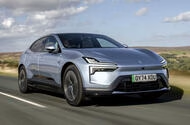Why Is Polestar Embracing Bold, Unconventional Car Design?
If you’ve seen a Polestar on the road, you know it doesn’t exactly blend in. That’s by design—literally. The Swedish electric vehicle brand is making waves by leaning into features that some drivers love and others, well, just don’t get. Take the Polestar 4, for example. It’s missing a rear window. Instead, it uses a camera system to provide a digital rear view. For some, that’s futuristic and cool. For others, it’s just odd.
So why go out on a limb? According to Polestar CEO Michael Lohscheller, it’s all about standing out in a sea of sameness. At a recent industry event, he put it plainly: “You don’t want a car that is ‘kind of all right.’ Everybody has a ‘kind of all right’ car, but you want a very specific car.” In other words, Polestar isn’t chasing universal approval. They’re after passion—whether that means love or, occasionally, a hard pass.
How Do Customers React to Polestar’s Polarizing Features?
Here’s the surprising part: most people adapt quickly. Lohscheller shared that about 80% of customers get used to the quirks—like the missing rear window—and end up liking them. Of course, that leaves 20% who decide it’s just not for them. And that’s fine by Polestar. They’d rather have a loyal fanbase than a lukewarm following.
This approach isn’t just about being different for the sake of it. It’s a calculated bet that today’s car buyers want something memorable. In a world where automotive design can feel copy-pasted, Polestar’s willingness to take risks is refreshing. It’s a lesson many brands could learn: sometimes, it’s better to be unforgettable than universally “okay.”
What’s the Story Behind Polestar’s Ever-Changing Platforms?
If you’re a car enthusiast, you might have noticed another Polestar quirk: every model so far has been built on a different platform. That’s unusual in the auto industry, where sharing platforms across models is the norm for efficiency and cost savings.
But change is coming. Lohscheller revealed that Polestar plans to “harmonize over time,” with future models—like the upcoming Polestar 7 SUV and the next-generation Polestar 2—set to share more common underpinnings. Why the shift? Standardization brings better quality and streamlines production, which is crucial as the brand scales up.
How Is European Production Shaping Polestar’s Future?
Polestar’s decision to ramp up European manufacturing isn’t just about logistics—it’s a strategic move with big environmental and business implications. By building cars closer to their largest market, Polestar can cut down on shipping emissions and get vehicles to customers faster. That’s especially important in the UK, which is currently Polestar’s biggest single market.
This local approach also aligns with broader industry trends. According to a 2023 report from the European Automobile Manufacturers’ Association, localizing production can reduce a car’s carbon footprint by up to 30% compared to overseas imports. For a brand that’s all about sustainability, that’s a win-win.
What Is Polestar’s ‘Asset-Light’ Business Model and Why Does It Matter?
Unlike traditional automakers that own their factories and develop everything in-house, Polestar is committed to an “asset-light” model. That means they partner with other companies for platforms, technology, and even manufacturing. Lohscheller believes this is the future of the automotive industry—allowing brands to be more nimble, efficient, and collaborative.
This approach isn’t just theory. Tesla, for example, has famously partnered with Panasonic for battery tech, while Toyota and Subaru have co-developed platforms for electric vehicles. Polestar’s strategy puts it in good company and may help it weather the ups and downs of a rapidly changing market.
How Is Polestar Navigating Financial Challenges in a Tough Market?
It hasn’t all been smooth sailing. Polestar recently reported a quarterly loss of over $1 billion, including a hefty write-down on its US-built Polestar 3 due to softer-than-expected demand and trade tariffs. That’s a tough pill to swallow, but Lohscheller remains optimistic.
He points to some bright spots: revenue growth of 56%, a positive gross margin for the first time, and reduced operating costs. These are strong signals that the underlying business is improving, even as the company navigates short-term headwinds.
What Can We Learn from Polestar’s Approach to Innovation and Risk?
Polestar’s story is a reminder that playing it safe rarely leads to greatness. By embracing bold design choices, experimenting with business models, and staying nimble in production, the brand is carving out a unique space in the crowded EV market.
Will every risk pay off? Probably not. But as Lohscheller says, it’s better to have people love your car—or even dislike it—than to have them forget it entirely. For anyone watching the future of electric vehicles, Polestar is a brand worth keeping an eye on. Their willingness to challenge convention might just set the pace for the next generation of automotive innovation.

